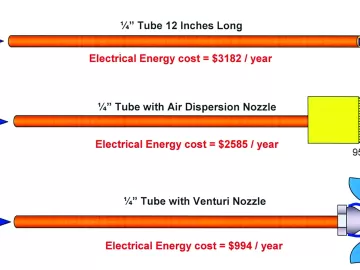The Importance of Bi-directional Compressed Air Flow Measurement
Technology is available which enables a compressed air flow meter to measure not only the magnitude of the flow, but also the direction. Why is this important? In this article we will describe two case studies where bi-directional compressed air flow measurement plays a key role to come to the right conclusions. In the first case study, we will describe an electronics manufacturing plant, which has a large interconnected ring network with two air compressor rooms located in different buildings. The two air compressor rooms are about five hundred feet apart. In the second case study, the effect of compressed air flow measurement upstream of a local receiver tank is described.












